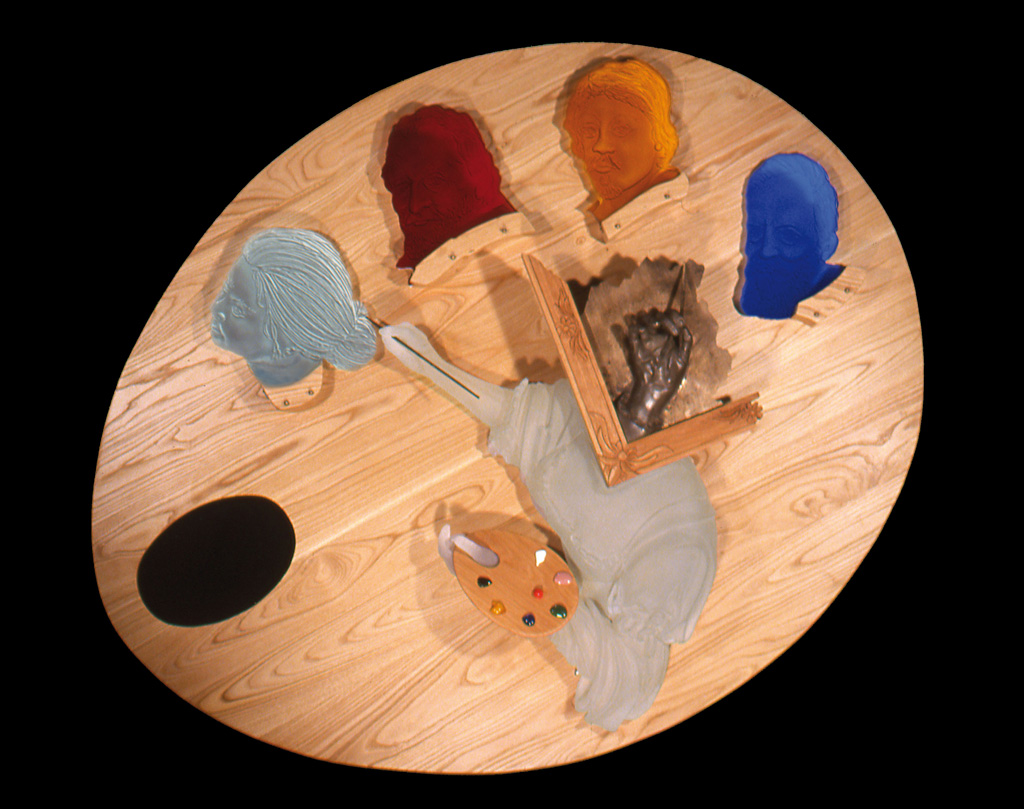Artemesia (Artemesia Gentileschi)
Materials Sanblasted colored glass, cast glass, bronze, and wood
Collection Fort Wayne Museum of Art, Fort Wayne, IN
Artemisia Gentileschi was one of the most important painters of the Baroque period and the first woman ever to be admitted to the Florentine Academy of Design. She was trained as a youngster by her father Orazio an important painter, whose work, along with that of Artemisia, has withstood the test of time. They were both vastly influenced by Caravaggio, the painter of light and shadow (chiaroscuro). It is important when understanding her intellectual life that in her later life she had an extensive exchange of letters with Galileo.
On the other hand, her personal life was marred by a nasty rape trial. She was molested as a young woman, by a painter, Agostino Tassi, whom her father had hired to further her painting studies. When Orazio brought charges, Artemisia was tortured in order to prove whether she was telling the truth. Just after the trial she entered into an arranged marriage with a rather weak man, a painter of very modest talent, Pierantonio Stiallesi. This was done at her father’s behest since it would be difficult for her to find a more suitable husband since she was “damaged goods” having been raped. They had one child, Prudentia, named after her mother.
Two paintings that are most recognizable in the oeuvre of Artemisia are “Judith Slaying Holofernes” in the collection of the Uffizi in Florence and the British Royal Collection’s “Self Portrait as the Allegory of Painting” which is the basis of this sculpture. A third painting emblematic of her style “Judith and her Handmaiden” is in the collection of the Detroit Institute of Art.
My sculpture not only tells the story of this remarkable artist, but it bridges the gap from the historical to the contemporary periods in art. It further reflects the continuing disparity between the attention given to men and women in the art world.
The four heads on the painter’s palette are Artemisia, Orazio, Caravaggio, and Galileo.
